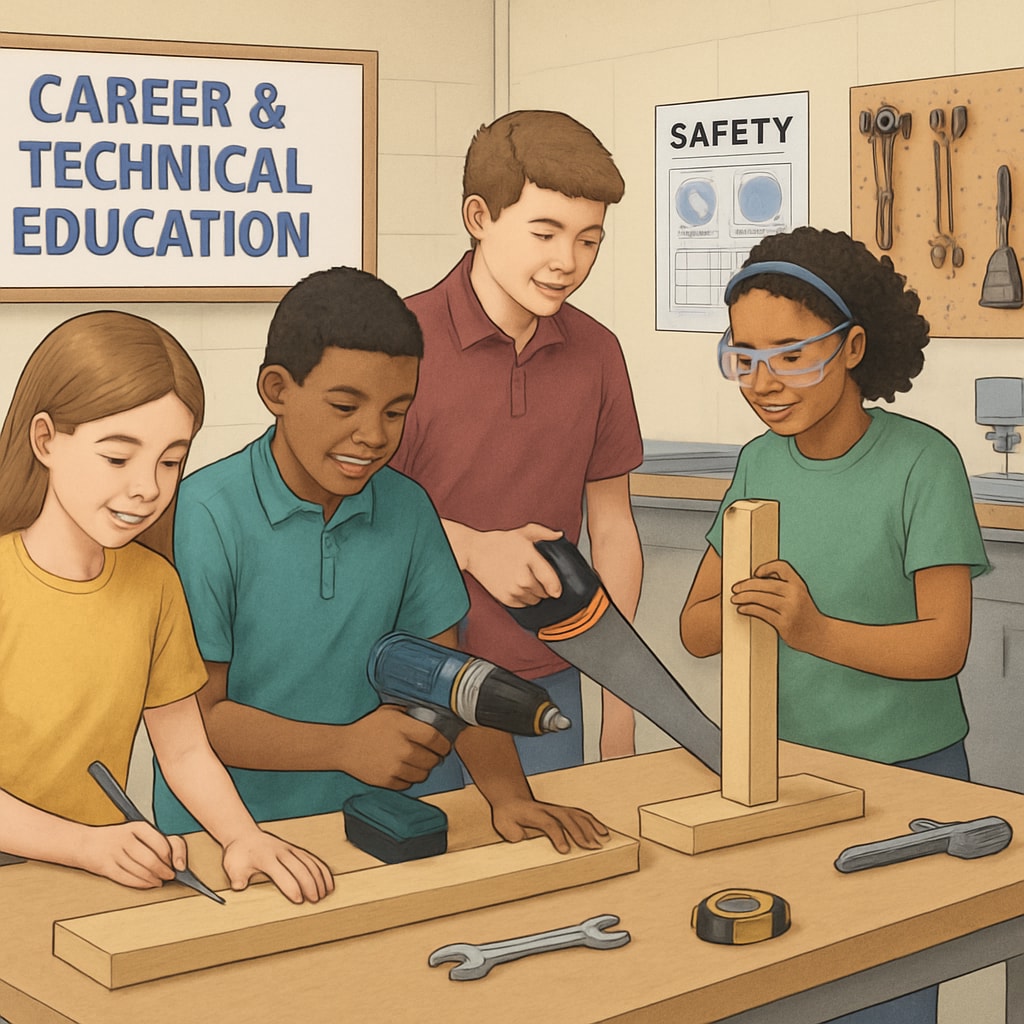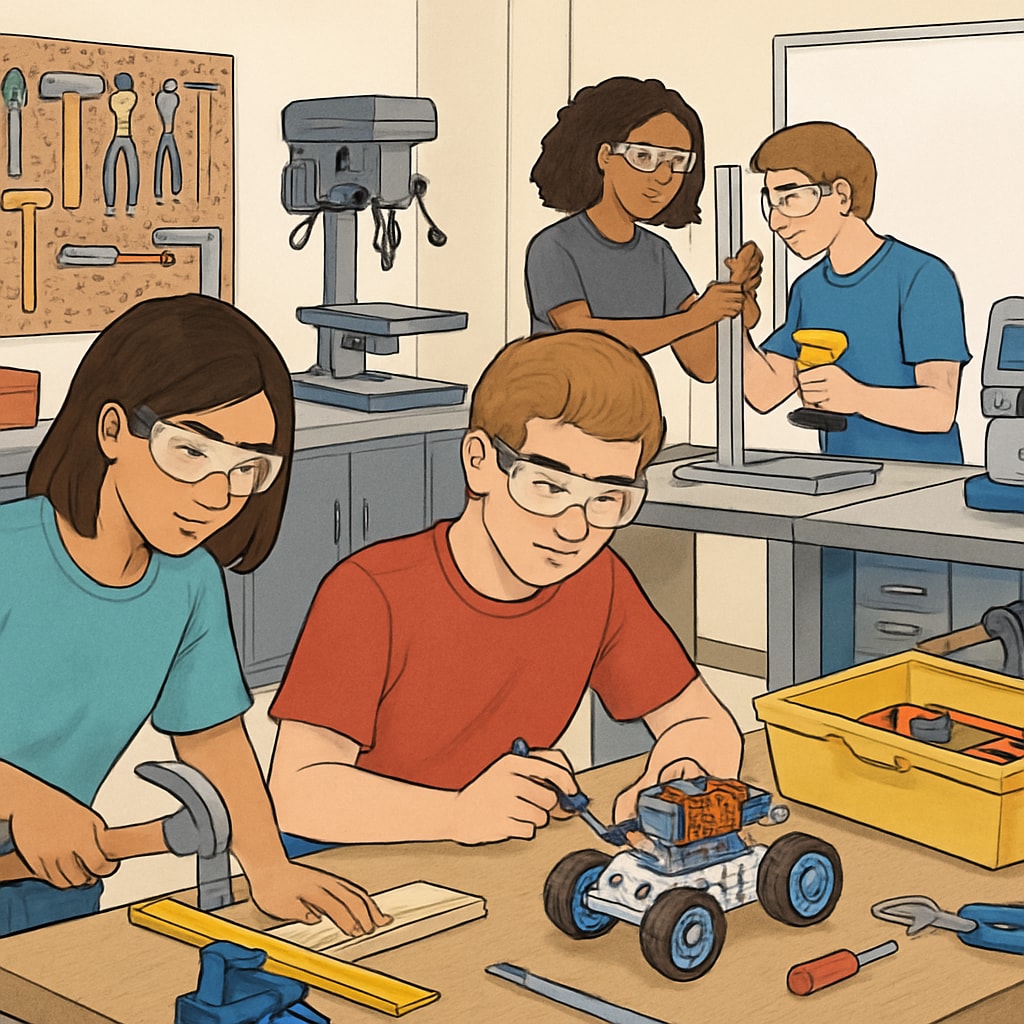In today’s rapidly evolving educational landscape, the role of Career and Technical Education (CTE) in K-12 schools has gained significant attention. As districts strive to prepare students for both academic success and future careers, the balance between CTE programs and traditional subjects has emerged as a critical area of focus. This article delves into the importance of CTE in K-12 education, explores district implementation models, and provides actionable strategies for integrating CTE with traditional subjects to achieve a well-rounded curriculum.

Understanding the Role of Career and Technical Education
Career and Technical Education (CTE) encompasses programs designed to equip students with practical skills and knowledge that align with industry demands. By offering pathways in fields such as healthcare, technology, and manufacturing, CTE fosters career readiness and bridges the gap between academia and the workforce. However, some educators express concern that an emphasis on CTE might overshadow traditional subjects like mathematics, science, and literature, which remain foundational to student development. Striking a balance is essential to ensure that students receive a comprehensive education that prepares them for both college and careers.
For example, integrating CTE with traditional subjects can enhance student engagement. A robotics program could incorporate physics principles, while culinary arts courses might include lessons on chemistry and nutrition. These synergies not only enrich the learning experience but also demonstrate the real-world applications of academic knowledge.
Implementation Models Across School Districts
School districts vary widely in their approaches to implementing CTE programs. Some districts adopt standalone CTE programs, offering specialized courses in dedicated facilities. Others integrate CTE into existing curricula, blending vocational training with academic instruction. The choice of implementation model often depends on resources, community needs, and state policies.
One notable example is the California Partnership Academies, which combine academic and career-focused education within small learning communities. These academies create a cohesive learning environment where traditional subjects complement CTE coursework, fostering collaboration between academic and vocational teachers. Similarly, dual enrollment programs allow high school students to earn college credits while exploring career pathways, providing a seamless transition from secondary to post-secondary education.

Strategies for Integrating CTE and Traditional Subjects
To effectively balance CTE and traditional subjects, educators and policymakers can adopt several strategies:
- Cross-disciplinary Collaboration: Encourage teachers from different subject areas to work together on interdisciplinary projects. For instance, a business teacher could partner with a math teacher to design lessons on financial literacy and budgeting.
- Curriculum Alignment: Develop curricula that align CTE programs with academic standards, ensuring that vocational training reinforces key concepts taught in traditional subjects.
- Professional Development: Provide training for teachers to integrate CTE elements into their lessons, equipping them with the skills to bridge the gap between vocational and academic education.
- Community Engagement: Collaborate with local industries and businesses to design programs that reflect real-world needs, creating opportunities for internships and mentorships.
By implementing these strategies, schools can create an educational framework that values both career preparedness and academic achievement.
The Future of K-12 Education: Achieving Balance
As K-12 education continues to evolve, the integration of Career and Technical Education with traditional subjects will play a vital role in shaping future generations. A balanced approach ensures that students develop critical thinking skills alongside technical expertise, preparing them for diverse opportunities in higher education and the workforce.
Moreover, fostering this balance contributes to equity in education, as students from all backgrounds gain access to career pathways and academic foundations. Policymakers, educators, and community stakeholders must work together to redefine the relationship between CTE and traditional subjects, ensuring that every student benefits from a well-rounded educational experience.
In conclusion, Career and Technical Education is not a replacement for traditional subjects but a complement that enriches the curriculum and prepares students for the complexities of modern society. By embracing innovative implementation models and integration strategies, K-12 schools can empower students to thrive academically and professionally.
Readability guidance: Use concise, engaging paragraphs and incorporate lists to summarize key points. Ensure smooth transitions between sections using phrases such as “for example,” “in addition,” and “as a result.” Maintain a clear distinction between active and passive voice to enhance readability.


